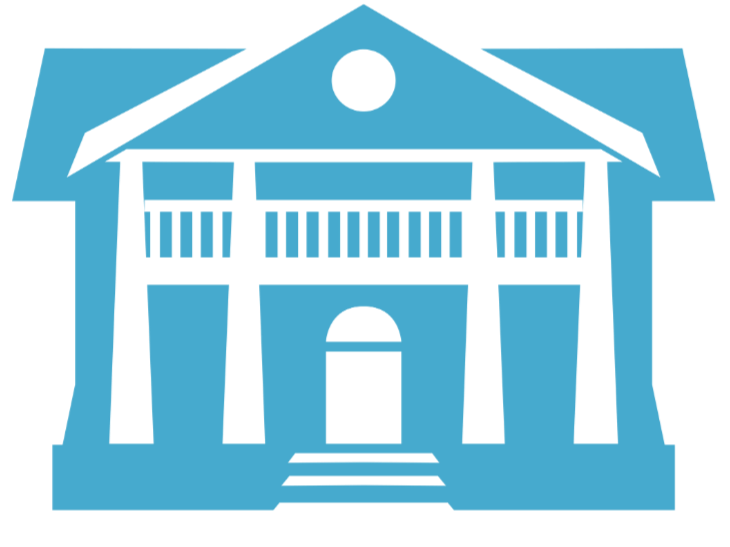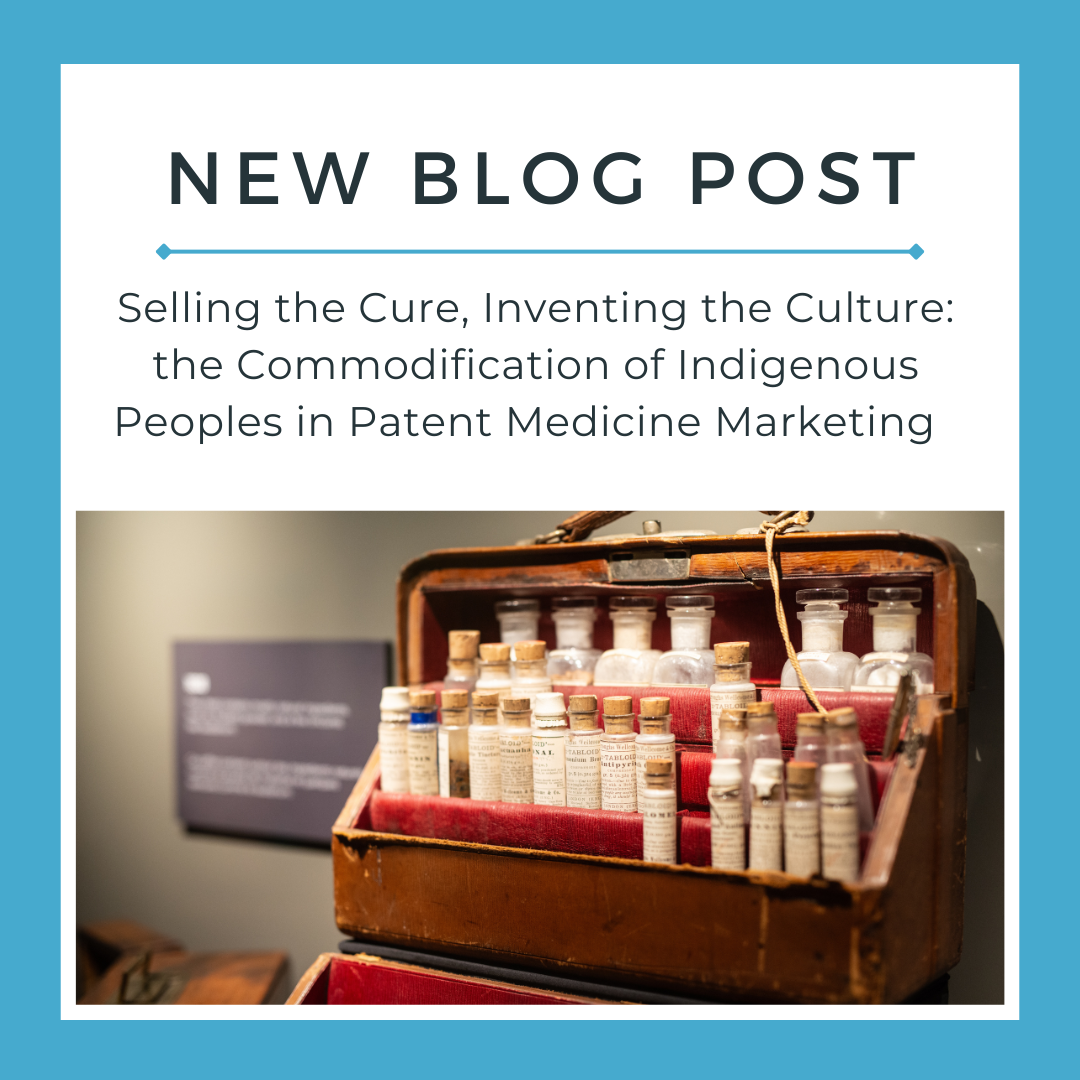Selling the Cure, Inventing the Culture: The Commodification of Indigenous Peoples in Patent Medicine Marketing
Content Warning: This material contains discussions and images of anti-Indigenous racism, including historical and contemporary forms of discrimination. It also includes the use of the term "Indian", which is considered outdated and harmful. The term appears in a historical or critical context and does not reflect current respectful language for Indigenous Peoples. These parts of the blog will have their paragraphs with a different coloured backdrop.
June marks National Indigenous History Month. At the Museum of Health Care, we recognize the harms Indigenous Peoples experience in health care systems across North America. Medical racism creates barriers to care, disparities in health care, and racist stereotypes, leaving an ongoing legacy of harm. Elements of our museum’s collection reflect these attitudes and misinformation, including objects that perpetuate racist imagery and colonial narratives. By examining and analysing these artifacts, we can recognize the racist motifs, stereotypes, and foundation of misinformation persisting to this day. We believe that museums can be spaces for learning, dialogue, accountability, and can work to establish a more equitable future in health care.
A Medical Marketing Strategy
North American patent medicine appeared in the early 1800s and was popularized by advertisements. By the 1840s, patent medicine companies began to create their own guidebooks for their products that became an “informal textbook” for the American people. These companies were considered authorities of health and wellness, meaning their portrayals of any group held weight. Many patent medicine companies appropriated the iconography and medicinal knowledge of Indigenous peoples in their advertising. The prevalence of these racist depictions speak to the anti-Indigenous racism in North American that reinforced prejudice for the sake of profit.
A Homogenized Caricature
A harmful caricature of Indigenous peoples depicted in medicinal advertisements is the "Plains Indian." It is characterized by one individual wearing a full feathered headdress, buckskin, and/or face paint. It also manifests with the use of teepees, bows, arrows, tomahawks, and violence. The caricature exists as a homogenization of Indigenous culture, reduced by colonial figures to mere iconography. No "Plains Indian" culture ever existed, it is a racist invention that was most popular in medical advertising. Researcher Stephanie A. Molholt found that of 850 print advertisements from 1898-2008 in a range of popular magazines, 83% of all advertisements contained "characteristics of only one American Indian cultural group, the ‘Plains Indian.’”
At the Museum of Health Care, we don’t have to look far to see examples of these caricatures. The first object from our collection is the Kickapoo Doctor advertising pamphlet (circa 1890-1900). The cover depicts a “Chief” in a headdress with the “K” in “Kickapoo" constructed with a tomahawk and a bow. The Chief Kickapoo Medicine Company was one of the most well-known companies engaging in anti-Indigenous illustrations. It was founded in 1881 by two white entrepreneurs, John E. Hely and Charles Bigelow. While they employed some Indigenous performers in travelling medicine shows, none were Kickapoo, who originate in the region south of the Great Lakes. The company name was based on, “the notion of Native Americans as wise, mystical healers with magical knowledge of botanical medicine.” The Kickapoo Medicine Company sold a variety of products, the most popular being “Kickapoo Indian Sagwa” claiming it was “made by Elders of the Kickapoo tribe.” The reality was, the ingredients were bought at a regular pharmaceutical store and were not made by Elders.
Additionally, the company created "Kickapoo shows" hosted by Dr. N.T. Oliver nicknamed "Nevada Ned.” The first Indigenous peoples who traveled with the Kickapoo Medicine shows were Haudenosaunee and would later include individuals from the Pawnee, Cree, Sioux, and Cherokee peoples- all expected to pose as a Kickapoo doctor. The patent medicine companies did not care to learn or promote Indigenous healthcare, culture, or language. One of Nevada Ned’s acts was to provide 'translations' of the speeches given by the "Kickapoos." However, the translations were completely made up and Nevada Ned later confessed, "what the brave actually said, I never knew, but I had reason to fear it was not the noble discourse of my translation.” The Indigenous peoples in these shows were paid to pretend to be a caricature of themselves to help the company sell more products.
The second object from our collection is ‘Blackhawk’s Blood and Body Tonic’ (c. 1900-1930). Pictured is an image of an Indigenous person as the “Plains Indian” caricature that is meant to represent a “Black hawk” chief with verbiage claiming he is “The Big Chief of All Remedies.” Unlike other advertisements, this one draws its namesake from one specific man: Black Hawk (Ma-ka-tai-me-she-kia-kiak). He was a Chief and warrior of the Sauk American Indian Tribe. He fought for the British in the War of 1812 and was defeated in the 1832 Black Hawk War fighting for the land rights of his people. After the War of 1812, he was imprisoned by the American military and his life story was transcribed, making him the first “American Indian” to have his autobiography published. His name and image were widely distributed and as a result, his name was utilized in various products- the most famous being the Chicago Blackhawks NHL team. The logos and iconography of ‘Blackhawks Blood and Body Tonic’ are not grounded in the appearance of Black Hawk or the Sauk people as neither wore a feathered headdress. Instead, the advertising pulls on the appearance of a fictitious depiction of Indigenous peoples.
A Racist Rationale
The rationale behind these advertising techniques is reliant on the argument: the appeal to nature fallacy. The appeal to nature fallacy dictates that if a thing is “natural” or “from nature”, then it must inherently be better than “non-natural” things.This is based on the racist notion that Indigenous peoples are more primitive than Western culture, and therefore are considered “wild and uncivilized.” Indigenous medicine is then framed as more effective, not because it is rooted in centuries of practice, but because it is from the wilderness made by “wild” people.
The “Magical Medicine Man” is another racist motif commonly utilized in medical advertising. Frequently appearing in European sources, the term “medicine man” or “woman” refers to practitioners of traditional holistic medicine and healing in various Indigenous societies. However, it should be noted that many Indigenous cultures in North America do have specific roles in their communities for people who administer treatment for mental, spiritual, and physical health. Some examples in the Ojibwe culture include nanaandawi’wininiwag (doctors), mashkikiiwininiwag (herbal healers) and kakanaweenimit (midwives). Unfortunately, the use of this term within European sources has resulted in many harmful misconceptions regarding Indigenous peoples and their traditional medicinal practices. Depictions of Indigenous “medicine men/women” often portray them possessing seemingly intuitive connections to nature and spirituality that appear similar to “magical” powers.
One example of this trope in medical advertising is the late nineteenth-century advertisement for the services of Dr. Newall. Robert Newall, an American trapper and politician of European descent, worked throughout the western United States. Throughout his career as a trapper, Newell accumulated some knowledge of the traditional medicinal practices of various Indigenous cultures. He began to offer his services as Dr. Newall the “Native Indian Doctor.” Despite Newall’s lack of medical knowledge and Indigenous heritage, his advertisements incorporated stereotypes of Indigenous healers such as medicine men as being “mystic” and inherently connected to the natural world. These caricatures continue the appeal to nature fallacy to attract consumers seeking “natural” cures. The use of the term “original” to describe his practices, and referencing of native flora and fauna are all examples of this fallacy in action. The “medicine man/woman” archetype illustrates the homogenization of Indigenous medical traditions and how it contributed to the spread of harmful misinformation through advertisements such as those for “Dr.”Newell’s services.
The misrepresentation of Indigenous medicine and the exclusion of Indigenous medical knowledge in colonial sources is a persisting issue. Many areas of medical practice and study fail to include Indigenous perspectives and knowledge on specific substances integral to traditional healing practices. For example, research focused on the medicinal properties of psychedelics and psychedelic-assisted therapy continues to grow increasingly profitable in Western medicine, with experts estimating they will generate a total profit of 6.85 billion dollars by 2027. Despite immense profits and the well-documented use of naturally occurring psychedelics in traditional Indigenous medicine, very little of these profits make their way back to Indigenous communities.
Conclusion
Anti-Indigenous racism and the appropriation of Indigenous medicine in medical advertising has persisted over hundreds of years. Logical fallacies and overly homogenized caricatures of Indigenous individuals portray Indigeneity as spiritually and innately connected to nature in order to successfully market medicinal products to primarily European settler consumers. Unfortunately, even today Indigenous knowledge is still often not incorporated into research on medicinal products that have historically been used in traditional Indigenous healing practices. In addition to this, Indigenous communities continue to receive little to no profits from the commercialization of medicinal products that have been manufactured or developed using Indigenous knowledge.
References
Carson, Gerald. One for a Man, Two for a Horse; a Pictorial History
Ethical principles of traditional Indigenous Medicine to guide Western Psychedelic Research and Practice - The Lancet Regional Health – Americas. Accessed June 18, 2025. https://www.thelancet.com/journals/lanam/article/PIIS2667-193X(22)00227-7/fulltext.
Heckman, Annie. “Medicine Man.” Kiinawin Kawindomowin - Story Nations, July 14, 2020. https://storynations.utoronto.ca/index.php/medicine-man/.
“Magical Native American.” TV Tropes. Accessed June 17, 2025. https://tvtropes.org/pmwiki/pmwiki.php/Main/MagicalNativeAmerican.
McIntosh, Matthew. “Quack Cures and Self-Remedies in the 19th and Early 20th Centuries.” Brewminate, March 14, 2025. https://brewminate.com/quack-cures-and-self-remedies-in-the-19th-and-early-20th-centuries/.
“Medicine Man.” Encyclopædia Britannica. Accessed June 17, 2025. https://www.britannica.com/topic/medicine-man.
“The Midwest Indian Doctors.” Brian Altonen, MPH, MS, September 12, 2011. https://brianaltonenmph.com/6-history-of-medicine-and-pharmacy/the-midwest-indian-doctors/.
Nittle, Nadra Kareem. “Native American Stereotypes in Film and Television.” ThoughtCo, May 7, 2025. https://www.thoughtco.com/native-american-stereotypes-in-film-television-2834655.
Reid, Anna. “The Portrayal of the Native American Medicine Man or Shaman.” Art Hx Visual and Medical Legacies of British Colonialism, June 8, 2022. https://artandcolonialmedicine.com/medicine-man/#:~:text=The%20figure%20of%20the%20shamanic,predates%20these%20early%20visual%20representations.
“Robert Newell House Museum and Newell School House Museum.” Robert Newell house & wedding location. Accessed June 18, 2025. https://web.archive.org/web/20070918001907/http://www.rootsweb.com/~orossdar/Newell.htm.
Ruggeri, Amanda. “Natural Doesn’t Always Mean Better: How to Spot If Someone Is Trying to Convince You with an ‘Appeal to Nature.’” BBC News, February 12, 2025. https://www.bbc.com/future/article/20250210-the-appeal-to-nature-fallacy-why-natural-doesnt-always-mean-better#.
Henry, Frances. “Contributions and Challenges of Addressing Discursive Racism in the Canadian Media.” Canadian Journal of Communication 34, no. 4 (2009): 711–14. https://doi.org/10.22230/cjc.2009v34n4a2297.
Nairn, Raymond. “Media, Racism and Public Health Psychology.” Journal of Health Psychology. 11, no. 2 (n.d.): 183–96. https://doi.org/info:doi/.
Mahtani, Minelle. “Representing Minorities: Canadian Media and Minority Identities.” Canadian Ethnic Studies = Études Ethniques Du Canada. 33, no. 3 (2001): 99–133. https://doi.org/info:doi/.
Veresiu, Ela. “Delegitimizing Racialized Brands.” Journal of the Association for Consumer Research 8, no. 1 (2023): 59–71. https://doi.org/10.1086/722694.
Eiland, Murray Lee. “Patenting Traditional Medicine.” In Patenting Traditional Medicine, 1st ed., 7–46. Nomos Verlagsgesellschaft mbH, 2018.
About the Authors:
Ella Stewart and Abby Baillargeon
Ella R. Stewart is an incoming fourth-year student at Queen’s University majoring in psychology and minoring in history. Ella possesses a strong academic background in clinical and cognitive psychology and twentieth-century Canadian history. She enjoys biking, hiking, trivia (of any kind), and listening to live music in her free time!
Abby is a graduate of the Queen's University Bachelor of Arts (Honours) program with a major in Classical Studies and a minor in English Language and Literature. They will be starting their Bachelor of Education in the fall. When they are not on the job they enjoy learning about mythology, playing Elden Ring, and watching hours long video essays.

